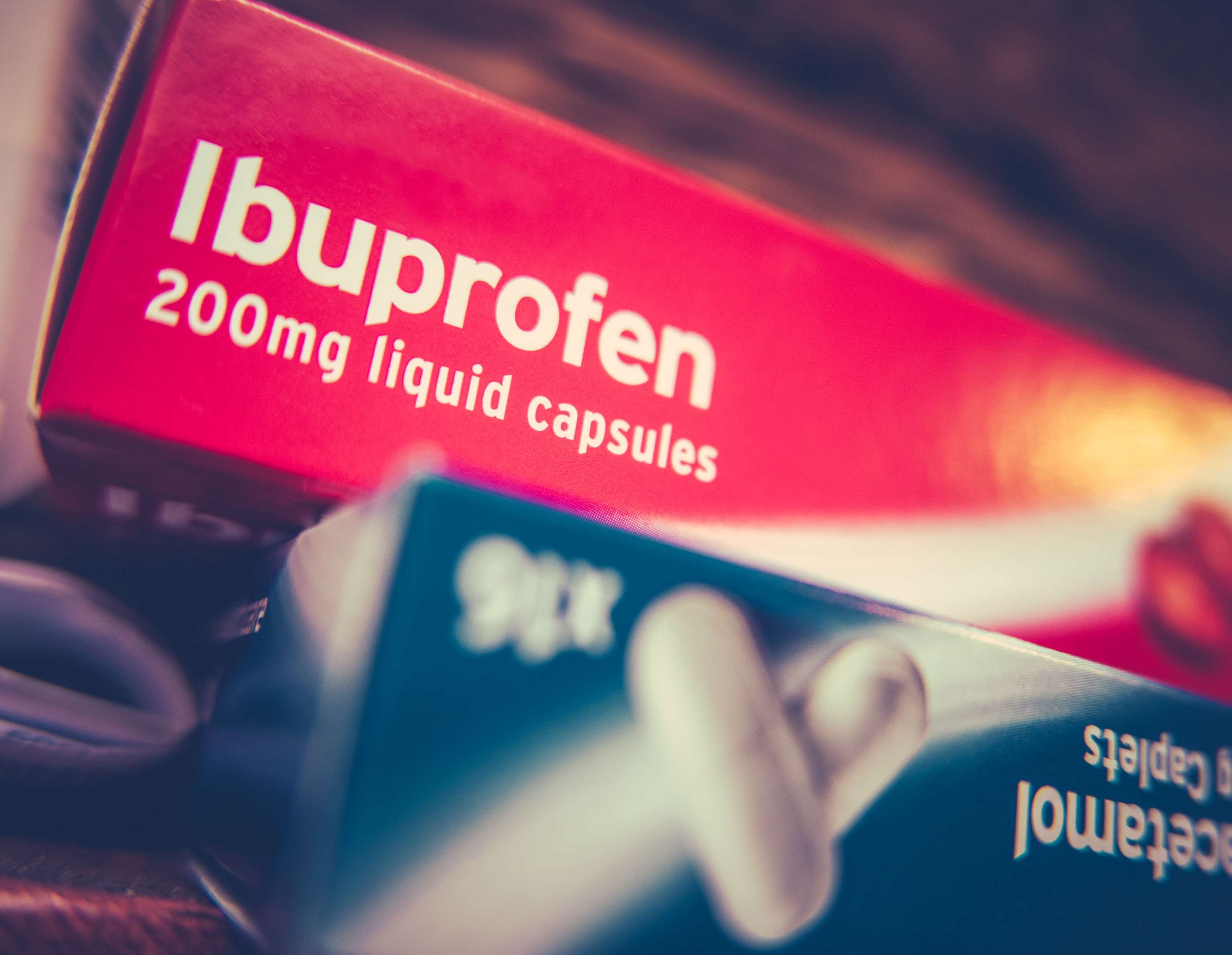Comparison of ibuprofen and paracetamol in children under 2 years of age

Ibuprofen and paracetamol:
Just like acetylsalisyl acid (ASA for short) and diclofenac , ibuprofen also belongs to the group of acidic non-opioid analgesics. These accumulate preferentially in acutely inflamed tissue, in the gastrointestinal tract and in the renal cortex. Paracetamol, on the other hand, is a so-called non-acidic non-opioid analgesic, which is found in high concentrations in the brain and spinal cord (or central nervous system). While agents such as ibuprofen have good anti-inflammatory properties, non-acid analgesics such as paracetamol have poor anti-inflammatory effects - but these can have a good antipyretic effect.
Different recommendations:
Liquid ibuprofen preparations have been available without a prescription for children aged three months and over since 1 November 2020. Prior to that, only oral acetaminophen and ibuprofen suppositories were available without a prescription for these children. According to data from a prospective cohort of 6476 children followed since birth, about 95% of children were exposed to acetaminophen by 9 months of age. Although the drugs are commonly used, recommendations for treatments of infants vary-especially in children younger than 6 months. While paracetamol is recommended for use in neonates in all countries, the maximum daily dose varies. Consequently, 60 mg/kg/day is recommended in New Zealand and the United Kingdom - up to 90 mg/kg/day in America.
The recommended use of ibuprofen for the treatment of fever and pain in young children also shows considerable variation. The New Zealand Formulary for Children recommends use of ibuprofen from one month of age at 5 mg/kg - 3 to 4 times daily, up to a maximum dose of 30 mg/kg/day. The US, on the other hand, recommends use only for children at least 6 months of age with a higher maximum daily dose of 40 mg/kg/day.
Epidemiologic studies from North America, the United Kingdom, and Europe record that ibuprofen may play a role in the development of bacterial infection in young children. Although data on risks of ibuprofen or acetaminophen in neonates are often included in studies across the age spectrum, specific analyses of the risk of serious adverse events and reviews of efficacy and safety in children younger than 2 years-particularly in infants younger than 6 months-are lacking.
That's why a new meta-analysis compared the safety and effectiveness of oral ibuprofen and acetaminophen in infants.
Meta-analysis:
The primary objective of this study was to compare the antipyretic effect, analgesic efficacy, and safety of acetaminophen with ibuprofen for the short-term treatment of fever or pain in children younger than 2 years of age. Secondary objectives included comparing the safety of the two agents in children younger than 6 months. Data from the MEDLINE, Embase, CINAHL databasesand data sources from the Cochrane Central Register of Controlled Trials, the ClinicalTrial.gov trial registry and the Australian New Zealand Clinical Trials Registry were analysed. All trials involving children younger than 2 years and directly comparing acetaminophen with ibuprofen were significant for this meta-analysis.
Primary outcomes were fever or pain within the first 4 hours of starting treatment.
Differences and similarities:
From a total of 19 studies, 241,138 participants from 7 countries and different health care settings were included in this analysis. Compared with acetaminophen, ibuprofen showed a reduction in temperature after less than 4 to 24 hours and less pain after 4 to 24 hours. Side effects were uncommon in all studies. At four hours and 4 to 24 hours after ibuprofen administration, children were more likely to be without fever. However, after more than one day, no differences were seen between the drugs. Rates of adverse effects were also similar for ibuprofen and acetaminophen - particularly the likelihood of kidney damage, liver damage, and asthma. Because only two of the studies analyzed included the group of children younger than 6 months, the data were insufficient for this analysis. In addition, data on pain reduction in the first four hours were unfortunately not available. In preterm infants, the two drugs show a similar safety profile.
Conclusion:
In this analysis, the use of ibuprofen compared with acetaminophen in children under 2 years of age demonstrated better efficacy in terms of temperature reduction and less pain within the first day after treatment, with similarities in the safety profile of both drugs.
Active ingredients:
Sources
- Tan E, Braithwaite I, McKinlay CJD, Dalziel SR. Comparison of Acetaminophen (Paracetamol) With Ibuprofen for Treatment of Fever or Pain in Children Younger Than 2 Years: A Systematic Review and Meta-analysis. JAMA Netw Open. 2020;3(10):e2022398. doi:10.1001/jamanetworkopen.2020.22398
- Ziesenitz VC, Zutter A, Erb TO, van den Anker JN. Efficacy and safety of ibuprofen in infants aged between 3 and 6 months. Paediatr Drugs. 2017;19(4):277-290. doi:10.1007/s40272-017-0235-3
- Harriet Lane Service (Johns Hopkins Hospital). The Harriet Lane Handbook: A Manual for Pediatric House Officers. 21st ed. Hughes HK, Kahl LK, eds. Elsevier; 2018.
- Deutsche Apotheker Zeitung
- Ibuprofen
- Paracetamol

Danilo Glisic
Last updated on 21.06.2021
Your personal medication assistant
Browse our extensive database of medications from A-Z, including effects, side effects, and dosage.
All active ingredients with their effects, applications, and side effects, as well as the medications they are contained in.
Symptoms, causes, and treatments for common diseases and injuries.
The presented content does not replace the original package insert of the medication, especially regarding the dosage and effects of individual products. We cannot assume liability for the accuracy of the data, as the data has been partially converted automatically. Always consult a doctor for diagnoses and other health-related questions.
© medikamio